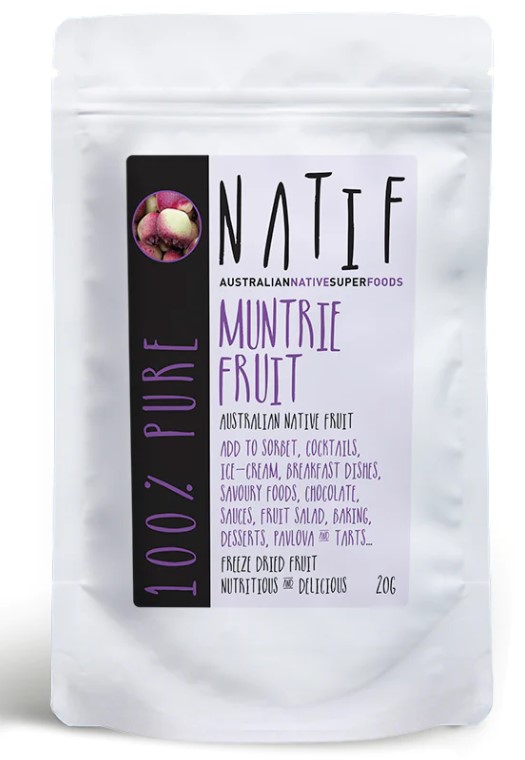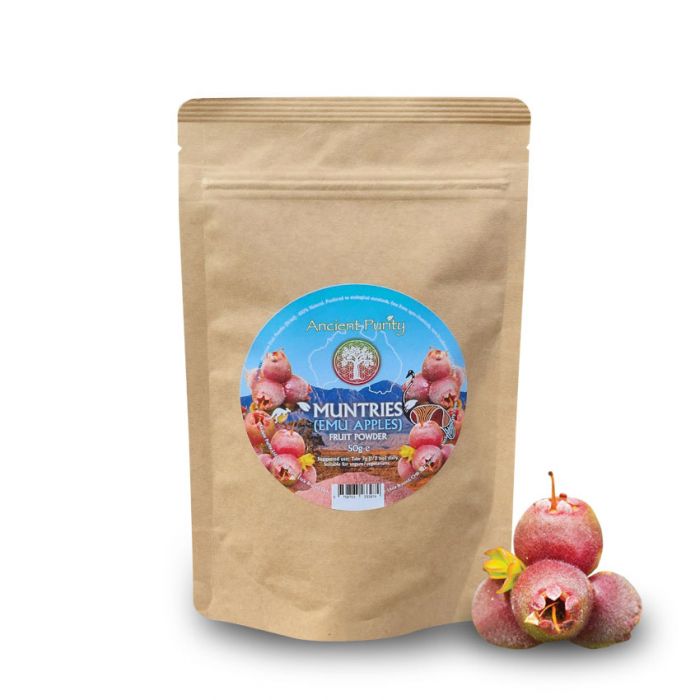
The Elusive Muntrie: Where to Find This Bush Tucker Gem and How to Enjoy It
The world of fruits is vast and diverse, with countless varieties offering unique flavors, textures, and nutritional benefits. While apples, oranges, and bananas are household names, there exists a treasure trove of lesser-known fruits, particularly those native to specific regions. Among these hidden gems is the Muntrie, a fascinating berry with a rich history and a delightful taste, hailing from the southwestern corner of Australia. Often referred to as the "muntries berry" or "native cranberry," this small, unassuming fruit is a testament to the incredible biodiversity of the Australian continent and a growing favorite among culinary enthusiasts and foragers alike.
What Exactly is a Muntrie?
The Muntrie (Kunzea pomifera), also known as the October cherry or native appleberry, is a low-growing, sprawling shrub native to the coastal sand dunes and limestone outcrops of South Australia and Western Australia. It’s a member of the Myrtaceae family, a diverse group that also includes eucalyptus and bottlebrush. The plant itself is characterized by its small, leathery, ovate leaves and its prolific production of small, round berries.

These berries are the true stars of the Muntrie. Typically ripening from late spring through summer, they start off green and gradually transform into a deep, attractive purple or bluish-black color when ripe. The size of the berries can vary, but they are generally about 1-2 centimeters in diameter, resembling a small cherry or a large blueberry.
A Taste of the Outback: The Flavor Profile
The flavor of a Muntrie is what truly sets it apart. It’s often described as a complex and intriguing combination of sweet and tart, with subtle hints of apple and cranberry. Some people detect notes of grape or even a slight herbaceousness. The texture is generally firm, with a satisfying pop when bitten into, releasing a juicy interior. Unlike some wild berries that can be overwhelmingly sour, Muntries offer a balanced sweetness that makes them incredibly versatile in the kitchen.
Nutritional Powerhouse:
Beyond their delicious taste, Muntries are also packed with nutritional goodness. They are an excellent source of Vitamin C, an essential antioxidant that supports the immune system and skin health. They also contain anthocyanins, the pigments responsible for their rich purple color, which are powerful antioxidants known for their anti-inflammatory properties. Additionally, Muntries offer dietary fiber, contributing to digestive health.
Where to Find Muntries: The Quest for the Berry
The primary challenge with Muntries, like many native Australian fruits, lies in their availability. They are not widely cultivated on a commercial scale, making them a bit of a treasure to find. However, for those eager to experience this unique flavor, there are several avenues to explore:
-
Native Food Retailers and Online Stores: This is by far the most reliable way to purchase Muntries, especially if you are not located in their native regions. Many specialty food stores in Australia that focus on native ingredients will stock Muntries, either fresh or in processed forms like jams, sauces, or dried berries. The rise of online shopping has made these products even more accessible. Searching for "Australian native foods," "bush tucker ingredients," or "Muntrie berries online" will likely yield several reputable retailers. These often source from small-scale growers or sustainable wild harvesting operations.
-
Farmers’ Markets (in specific regions): If you are fortunate enough to live in or visit South Australia, particularly the Adelaide Hills or coastal areas where Muntries are found, you might find them at local farmers’ markets. Look for stalls specializing in native produce or those run by small, independent growers. However, this is often seasonal and dependent on the success of the harvest.
-
Specialty Restaurants and Cafes: Some forward-thinking chefs and restaurants in Australia are incorporating native ingredients into their menus. While you might not be able to buy the fruit directly, experiencing it prepared by a skilled chef can be an excellent introduction. Keep an eye out for menus that highlight "bush tucker" or "native Australian cuisine."
-
Foraging (with caution and knowledge): For the adventurous and knowledgeable, foraging can be an option. However, this requires a deep understanding of the native flora, ethical harvesting practices, and respect for the environment. It’s crucial to be able to positively identify Muntrie plants and to harvest sustainably, ensuring the plant’s long-term survival. It is strongly recommended to go foraging with an experienced guide or to join a guided foraging tour if this is something you wish to pursue. Misidentification of plants can be dangerous, and overharvesting can have detrimental ecological impacts.
-
Growing Your Own: For dedicated enthusiasts, growing Muntries at home is becoming an increasingly viable option. Nurseries specializing in native Australian plants often sell Muntrie shrubs. They prefer well-drained, sandy soil and full sun. While it takes time for the plant to mature and produce fruit, the reward of harvesting your own Muntries is immense.

Tips for Purchasing and Storing:
When purchasing fresh Muntries, look for berries that are plump, firm, and have a deep purple color. Avoid any that appear bruised, shriveled, or moldy. Fresh Muntries have a relatively short shelf life, so it’s best to consume them within a few days of purchase.
If you have an abundance of fresh Muntries, they can be frozen for later use. Simply wash them gently, pat them dry, and spread them in a single layer on a baking sheet to freeze before transferring them to an airtight container or freezer bag. Frozen Muntries are excellent for smoothies, baking, and sauces.
Culinary Delights: Recipes Featuring Muntries
The unique flavor of Muntries lends itself beautifully to a variety of culinary applications. Their balance of sweetness and tartness makes them a versatile ingredient that can be used in both sweet and savory dishes.
Here are a few recipe ideas to inspire your Muntrie journey:
1. Simple Muntrie Jam/Compote:
This is a classic way to enjoy Muntries and preserve their flavor.
Ingredients:
- 500g fresh or frozen Muntries
- 200g sugar (adjust to your sweetness preference)
- Juice of 1/2 lemon
- 1-2 tablespoons water (if needed)
Instructions:
- If using fresh Muntries, wash them gently. If using frozen, you can use them directly.
- In a saucepan, combine the Muntries, sugar, and lemon juice.
- Cook over medium heat, stirring occasionally, until the sugar dissolves and the berries begin to break down, forming a jam-like consistency. This can take about 15-25 minutes.
- If the mixture becomes too thick, add a tablespoon or two of water.
- Taste and adjust sugar or lemon juice as needed.
- Remove from heat and let cool.
- Spoon into sterilized jars and store in the refrigerator. This jam is delicious on toast, scones, or with yogurt.
2. Muntrie and Apple Crumble:
A delightful twist on a classic dessert, highlighting the complementary flavors of Muntries and apples.
Ingredients:
- 300g fresh or frozen Muntries
- 2 medium apples, peeled, cored, and sliced
- 50g sugar (for fruit filling)
- 1/2 teaspoon ground cinnamon
- For the Crumble Topping:
- 150g plain flour
- 75g cold butter, cubed
- 75g rolled oats
- 50g brown sugar
Instructions:
- Preheat your oven to 180°C (350°F).
- In a bowl, combine the Muntries, sliced apples, sugar for the fruit filling, and cinnamon. Toss to coat.
- Pour the fruit mixture into a greased baking dish.
- To make the crumble topping: In a separate bowl, rub the cold butter into the flour using your fingertips until the mixture resembles breadcrumbs. Stir in the rolled oats and brown sugar.
- Crumble the topping evenly over the fruit mixture.
- Bake for 30-40 minutes, or until the topping is golden brown and the fruit is bubbling.
- Serve warm, perhaps with a dollop of cream or vanilla ice cream.
3. Muntrie Smoothie Booster:
Add a vibrant burst of flavor and nutrients to your morning smoothie.
Ingredients:
- 1 cup milk (dairy or non-dairy)
- 1/2 cup plain yogurt
- 1/4 cup fresh or frozen Muntries
- 1/2 banana
- 1 teaspoon honey or maple syrup (optional)
Instructions:
- Combine all ingredients in a blender.
- Blend until smooth and creamy.
- Adjust sweetness if desired. Enjoy immediately.
4. Muntrie Salad Dressing:
A tangy and slightly sweet dressing perfect for green salads.
Ingredients:
- 1/4 cup fresh or frozen Muntries
- 2 tablespoons olive oil
- 1 tablespoon white wine vinegar or apple cider vinegar
- 1 teaspoon honey or maple syrup
- Salt and freshly ground black pepper to taste
Instructions:
- In a small bowl, mash the Muntries with a fork until they are broken down.
- Whisk in the olive oil, vinegar, and honey.
- Season with salt and pepper to taste.
- Whisk until well combined. This dressing is best used fresh.
The Future of Muntries:
As interest in native Australian ingredients continues to grow, so too does the appreciation for fruits like the Muntrie. Efforts are being made to promote sustainable harvesting and to encourage cultivation. With its unique flavor, nutritional benefits, and intriguing origin story, the Muntrie is poised to become an increasingly recognized and sought-after ingredient in the world of gastronomy. So, embark on your own Muntrie adventure – whether through a specialty store, a farmers’ market, or even your own backyard – and discover the delightful taste of this truly Australian bush tucker gem.

